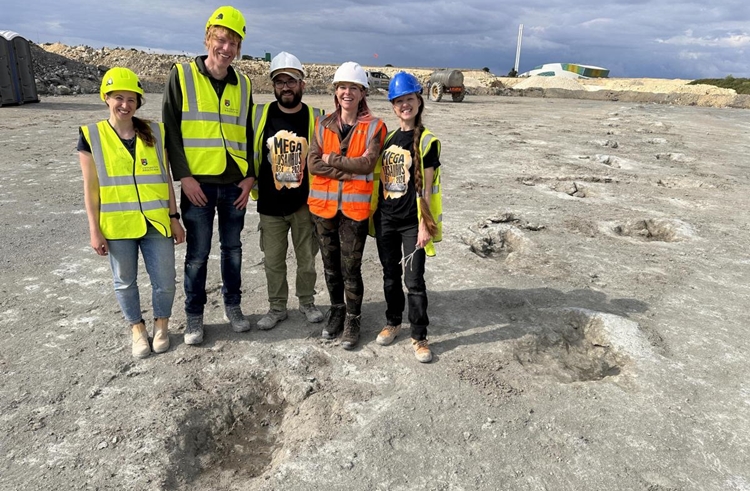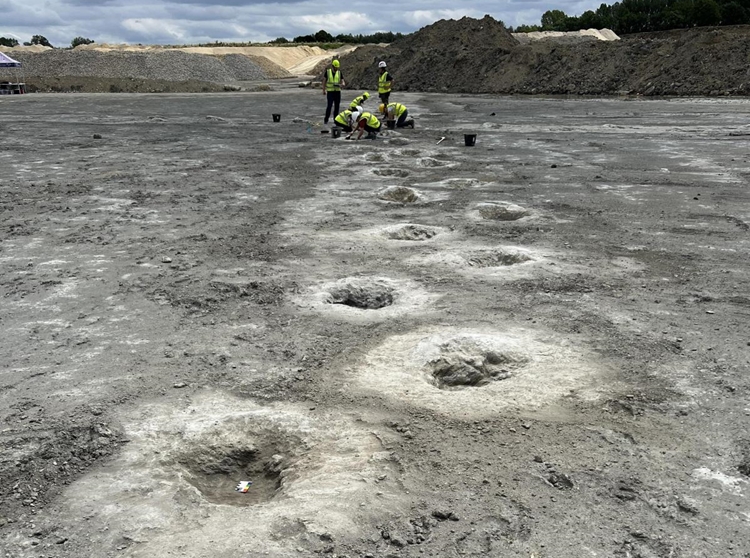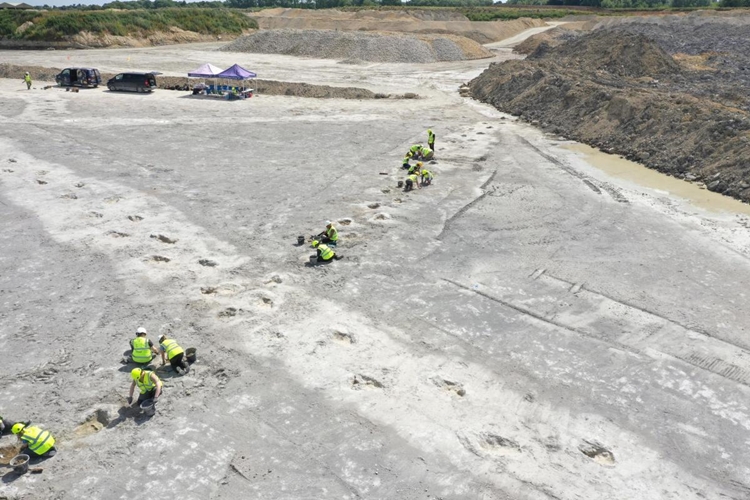Dinosaur Footprints Discovered in England
ENGLAND – A remarkable “dinosaur highway,” consisting of nearly 200 footprints dating back to the Middle Jurassic period, has been discovered at a limestone quarry in Oxfordshire. These footprints, estimated to be around 166 million years old, were uncovered in June after a worker noticed an unusual bump in the ground.
Researchers from the University of Oxford and the University of Birmingham revealed that these footprints provide valuable insights into the movements, interactions, and the tropical environment inhabited by dinosaurs in ancient times. The footprint trail includes four sets believed to have been left by giant sauropods, potentially the 18-meter-long Cetiosaurus. A fifth set of footprints is attributed to the aggressive 9-meter Megalosaurus, the first dinosaur to be officially named over two centuries ago.
This discovery raises questions about the interactions between carnivores and herbivores during the Jurassic period. Emma Nicholls, a vertebrate paleontologist at Oxford’s Museum of Natural History, emphasized that the study of Megalosaurus has been ongoing for years, and these recent findings confirm that there is still much to learn about different dinosaur species waiting to be uncovered. She noted, “These recent discoveries prove there is still new evidence of these animals out there, waiting to be found.”

The team used drones and captured over 20,000 digital images to create 3D models of the footprints, which will assist in studying the size, gait, and speed of these prehistoric creatures. Duncan Murdock, an earth scientist at the Oxford Museum, explained that the preservation is so detailed that researchers can observe how the mud was deformed as the dinosaurs walked through it. Along with other fossils like shells and plants, this discovery helps reconstruct the muddy lagoon environment the dinosaurs once traversed.

The newly found dinosaur footprints will be featured in an upcoming exhibit at the Oxford University Museum of Natural History and will also be showcased in the BBC program “Digging for Britain” next week.

